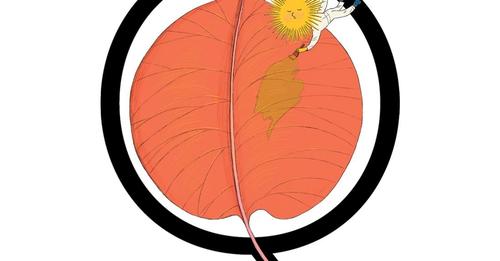:focal(549x413:550x414)/https://tf-cmsv2-smithsonianmag-media.s3.amazonaws.com/filer_public/53/98/5398265e-642c-420b-b3f2-2bb83c720221/ask_copy.jpg)
Illustration by Karlotta Freier
I thought I saw more red foliage this fall. Is that related to climate change? Pam Johnsen | Pigeon Forge, Tennessee
When trees stop producing chlorophyll, other compounds shine through. The compounds vary by species and determine the color of the tree’s autumn foliage—so a species like the ginkgo, which turns yellow in fall, won’t turn red. But climate volatility can produce displays that are more or less vibrant in a given year. Warm days and cool nights tend to produce the best fall color. A 2021 study suggested that Northeastern U.S. maple leaves are changing later—though climate change can also bring dry weather, pests and pathogens, which could make leaves fall sooner. —Jessica Shue, head technician for ForestGEO, Smithsonian Environmental Research Center
How accurate are prehistoric instruments that measured the solstice or the planets? Joan J. Mathews | Englewood, Florida
Prehistoric people had their own ways of predicting solar and stellar motion. Viking navigators accurately determined latitude by using a notched stick to measure the height of the sun at noon. The stone circle at Stonehenge, erected around 2500 B.C., measured angles at the solstice by observing the sun as it appeared in certain aligned openings. The path of the sun was important in many cultures—I research the Mongolian Bronze Age around 3,000 years ago, where people aligned rows of east-facing megaliths called deer stones in a north-south direction. Sometime between 220 and 150 B.C., people in the Hellenistic world invented the astrolabe, a metal disk with carefully placed openings that let them calculate the positions of the stars and planets more precisely. —William Fitzhugh, senior scientist, National Museum of Natural History
Some mammals have tails that seem useless. Or am I missing something? Steve Richardson | Knoxville, Tennessee
At first glance it may seem that many mammals don’t use their tails for much, but in fact they do! Dogs, for example, use their tails for social signaling: You can observe hierarchy by whether a tail is held straight up or pointed downward or between the hind legs. Some cats such as the cheetah use their tails as a counterweight to help them balance. Some mammals have prehensile tails and can hang from them. The Bornean tufted ground squirrel puffs up its beautiful long furred tail, likely to confuse potential predators. —Melissa T.R. Hawkins, curator of mammals, National Museum of Natural History
When did American cartoonists switch from using captions to speech bubbles? Mary C. McKeown | Lakeside Park, Kentucky
Modern comic art follows caricature traditions that began as early as the 18th century. Dialogue used to be contained in labels, or long, outlined “word balloons.” The Yellow Kid, generally considered the first U.S. comic strip character, spoke in rounded speech bubbles when he first appeared at the end of the 1800s. The use of speech bubbles continued through the 1910s when artists began to be hired across the U.S. to produce a variety of cartoon titles, and into the golden age of superhero comics, which started with Superman’s 1938 debut. They prevail to this day. —Joan Boudreau, curator of printing and graphic arts, National Museum of American History

/https://tf-cmsv2-smithsonianmag-media.s3.amazonaws.com/filer_public/4f/df/4fdf6eb6-84ac-417d-b362-acd854814dbc/microsoftteams-image_2.png)